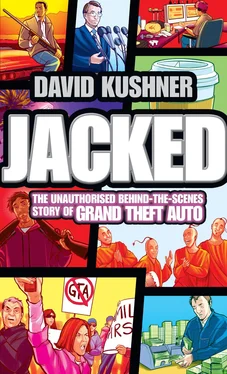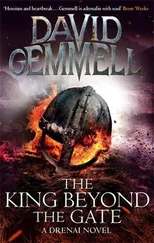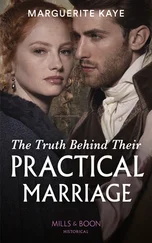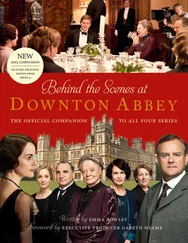GTA , the franchise published by Sam’s company, Rockstar Games, was among the most successful and notorious video games of all time. GTA IV alone would smash the Guinness Record to be the most profitable entertainment release in history—leaving every blockbuster superhero movie and even the final Harry Potter book in its pixilated wake. Players bought more than 114 million copies and shelled out over $3 billion on the titles. The juggernaut helped make video games the fastest-growing segment of the entertainment business. By 2011, the $60 billion global game industry would dwarf music and film box office sales—combined.
GTA revolutionized an industry, defined one generation, and pissed off another, transforming a medium long thought of as kids’ stuff into something culturally relevant, darkly funny, and wildly free. It cast players at “the center of their own criminal universe,” as Sam once told me. You were a bad guy doing bad things in fictional cities meticulously riffed from real life: Miami, Vegas, New York, and Los Angeles.
For the mad frat of Brits who invented the game, GTA was a love letter from England to America in all of its fantastic excess: the sex and the violence, the money and the crime, the fashion and the drugs. As the game’s phenomenally talented art director Aaron Garbut once told me, the goal was “to make the player feel like he’s starring in his own fucked-up Scorsese-directed cartoon.”
Ostensibly, players had to complete a series of missions for a motley crew of gangster bosses: whacking enemies, jacking cars, dealing drugs. Yet even better, players didn’t have to play by the rules at all. GTA was a brilliantly open world to explore. There was no high score to hit or princess to save. Players could just steal an eighteen-wheeler at gun-point, crank up the radio, and floor the gas, taking out pedestrians and lampposts and anything else dumb enough to get in the way of a good time. The fact that players could also hire hookers and kill cops made it controversial and tantalizing.
More personally, GTA made Sam Houser the rock star of his industry. Sam was passionate, driven, and creative, and Time ranked him among the world’s most influential people, alongside President Obama, Oprah Winfrey, and Gordon Brown, for “creating tapestries of modern times as detailed as those of Balzac or Dickens.” Variety called GTA “a hit-machine arguably unparalleled in any other part of the media business.” The Wall Street Journal dubbed Sam “one of the leading lights of the video game era. A secretive, demanding workaholic [with] a temperament and a budget befitting a Hollywood mogul.” One analyst compared his company to “the kids on the island in Lord of the Flies. ”But the hard work and long hours were all in service of Sam’s ultimate mission: to take this maligned and misunderstood medium, video games, and make it as awesome as it could be. But no one had anticipated that making a game about outlaws could seem so outlaw for real. And that’s what was bringing him to Washington, D.C., on this cold day.
After years of blaming Grand Theft Auto for inspiring murder and mayhem, politicians had what appeared to be a smoking gun: a hidden sex mini-game in the new GTA. The discovery of the scene, dubbed Hot Coffee, exploded into the industry’s biggest scandal ever, the Watergate of video games. Rockstar blamed hackers. Hackers blamed Rock-star. Politicians and parents wanted GTA banned.
Now everyone, it seemed—from the consumers who filed a multi-million-dollar class-action suit over the game to the Federal Trade Commission investigating Rockstar for fraud—wanted the truth. Had Rockstar purposely hidden porn in GTA to cash in? If the company had, its game might be over. As Sam’s rival, moral warrior attorney Jack Thompson, warned, “We are going to destroy Rockstar, you can count on that.”
How did this all happen? The answer is the story of a new generation and the game that defined it. As media theorist Marshall McLuhan once said, “The games of a people reveal a great deal about them.” It’s hard to understand those who came of age at the turn of the millennium without understanding GTA. Grand Theft Auto marked the awkward adolescence of a powerful medium as it struggled to grow up and find its voice. It was an artifact of the George W. Bush era and the fight for civil liberties.
The fact that it hit during one of the most volatile chapters in the history of media was no accident. It symbolized the freedoms and fears of the strange new universe dawning on the other side of the screens. GTA seemed to split the world into players and haters. Either you played, or you didn’t. For the players, jacking a car in the game was like saying, This is our ride now. This is our time behind the wheel. For the haters, it was something foreboding.
As Sam sat before the FTC investigators, the moment brought to mind an e-mail he had sent to a colleague when faced with compromising GTA. “The concept of a glorified shop (walmart) telling us what we can/can’t put in our game is just unacceptable on so many levels,” he wrote, “all of this material is perfectly reasonable for an adult (of course it is!), so we need to push to continue to have our medium accepted and respected as a mainstream entertainment platform. We have always been about pushing the boundaries; we cannot stop here.”
Chapter 1 The Outlaws Contents Title Page Jacked The unauthorized behind-the-scenes story of Grand Theft Auto DAVID KUSHNER Dedication Author’s Note Prologue - Players vs. Haters Chapter 1 - The Outlaws Chapter 2 - The Warriors Chapter 3 - Race ‘n’ Chase Chapter 4 - Gouranga! Chapter 5 - Eating the Hamster Chapter 6 - Liberty City Chapter 7 - Gang Warfare Chapter 8 - Steal This Game Chapter 9 - Rockstar Loft Chapter 10 - The Worst Place in America Chapter 11 - State of Emergency Chapter 12 - Crime Pays Chapter 13 - Vice City Chapter 14 - Rampages Chapter 15 - Cashmere Games Chapter 16 - Grand Death Auto Chapter 17 - Boyz in the Hood Chapter 18 - Sex in San Andreas Chapter 19 - Unlock the Darkness Chapter 20 - Hot Coffee Chapter 21 - Adults Only Chapter 22 - Busted! Chapter 23 - Bullies Chapter 24 - Flowers for Jack Chapter 25 - New York City Epilogue - Outlaws to the End Acknowledgments Notes Index Copyright About the Publisher
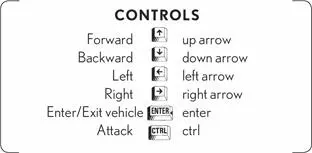
Grim city. Aerial view. A man in black runs along a river as a red sports car chases after him. Suddenly, a white convertible peels up in his path. “Over here, Jack!” shouts a beautiful young British woman behind the wheel. Jack leaps into her car, and she floors it. She has long auburn hair and stylish silver-framed shades. “You didn’t know you had a fairy godmother, did you?” she asks, coyly.
“So where are we going, Princess?” Jack asks.
“To the demon king’s castle, of course.” She shifts into high gear, speeding through a parking garage to safety.
In 1971, there was no cooler getaway driver than Geraldine Moffat, the actress in this scene from Get Carter , a British crime film released that year. Critics dismissed it, saying, “One would rather wash one’s mouth out with soap than recommend it.” Yet as is often the case with anything new and controversial, the fans won out in the end.
The scene of Moffat lounging nude in bed with Michael Caine—a Rolling Stones album propped on the nightstand beside them—epitomized how hip movies could be. Get Carter became a cult classic, and Moffat, one of London’s most fashionable stars. She married Walter Houser, a musician who ran the hottest jazz club in England, Ronnie Scott’s.
Читать дальше
